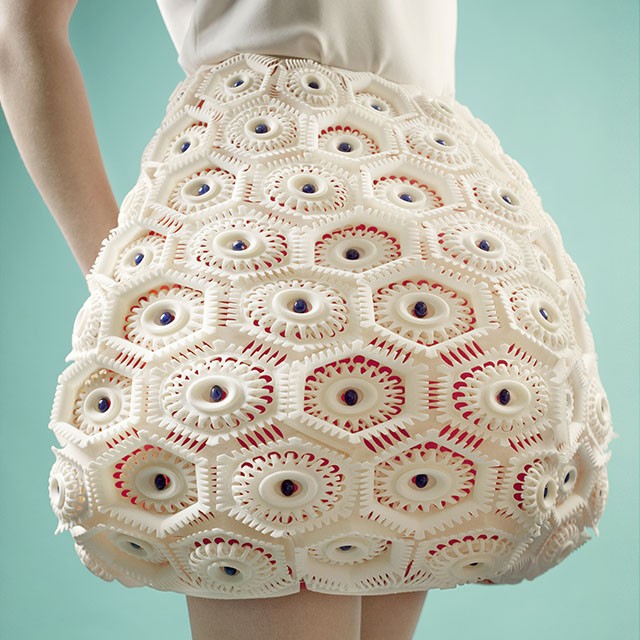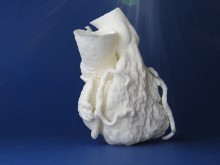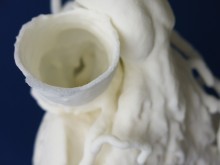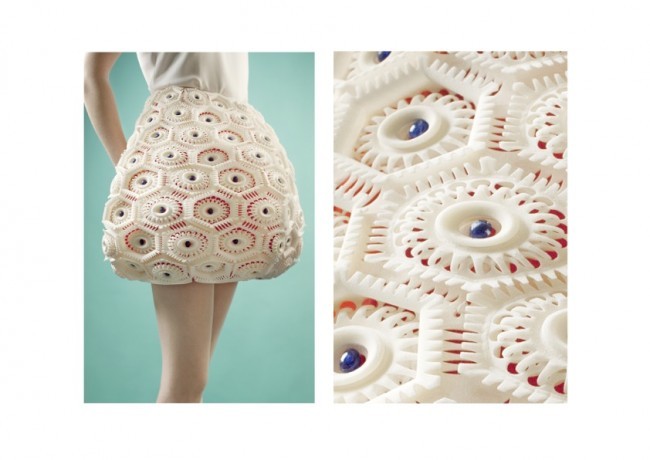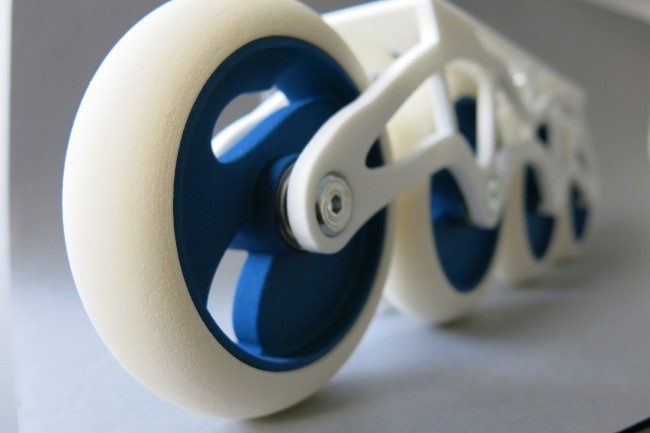Introducing Our New 3D Printed Flexible Plastic Material
Posted By Arthur Cassaignau on Jan 6, 2016 | 0 comments
3D printing is all about making the smartest material choice for a specific use. We believe that as a professional service, we have to offer you the broadest choice of materials and finishes. To complete our range of 3D printing services done with SLS 3D printers, we are adding a brand new Flexible Plastic material: TPU. Beyond just being awesome, this material is the world’s most flexible 3D printed TPU, and it has already helped our partners and clients to develop great projects in some of the most innovative sectors: the fashion industry and the medical sector.
Our new flexible plastic material for 3D printing
First, a little bit more about the material itself. The material we’re using for our Flexible Plastic is a TPU (Thermoplastic Polyurethane) specifically engineered for the laser sintering 3D printing process. Exclusive to our service, this new material makes it possible to create functional objects with a Shore hardness level of 65A, and therefore to reproduce complex mechanical properties.
This material allows you to create a fully functional objects that are soft where you need them to be. The Shore hardness level of 65A makes it the most flexible 3D printed TPU available out there. As any other material engineered for SLS 3D printing, our Flexible Plastic is a powder based material. The specificity of the material allows you to create objects that are very flexible but strong at the same time. The granular and grainy finish is very characteristic of this material.
To learn more about the printing process itself used to 3D print our Flexible Plastic, you can take a look at our page dedicated to SLS 3D printing or watch our newest Factory Tour on video.
We’ve waited a while before telling you about this brand new material because we wanted to make sure that we were able to print most of the TPU orders that will be sent our way. Though it still is on beta, we’re confident that we can process your orders. Another reason why we waited is because we needed partners and clients to help us work on real-life cases that utilize this material. For CES this year, we’re displaying great examples of what is achievable with this new material.
“This new type of material puts 3D printing at the same level as traditional production methods by – finally – making it possible to create soft, flexible objects that are truly functional rather than simply prototypes. We are enthusiastic about the first applications conceived by our clients using this completely new material. From medical applications to the world of textiles, we are committed to working alongside the industry leaders of today and tomorrow.” – Clément Moreau, Sculpteo’s CEO and co-founder
Reproducing organs to train surgeons
A few weeks ago, we published a post about how 3D printing is helping the medical sector evolve and become even more precise. Among the different examples that were displayed, we mentioned the possibility to replicate organs and create ancillary tools for surgeons. The flexibility and strength of TPU make it possible to recreate human organs to provide surgeons with a realistic teaching material on which to train before carrying out surgical procedures.
As part of this trials, we’ve worked with the Doctor Jean-François Paul from the Institut Montsouris Paris in France to come up with the model of a heart that mimics as closely as possible all the mechanical properties of the real thing. The result is a reproduction of a heart 3D printed with our Flexible Plastic material to help the surgeon train before a surgery.
Creating the Virus Collection with Anastasia Ruiz
We’ve been working hand and hand with a young designer and ESMOD graduate Anastasia Ruiz, who imagined a collection based on the principle that 3D printing can be truly wearable and accessible with a reasonable price tag. She integrated 3D printing into everyday fashion in her ‘Virus’ collection. Rather than seeking to replace fabric, Anastasia Ruiz has used 3D printing as an additional material for her designs.
How should you design for Flexible Plastic ?
The process of 3D printing our Flexible Plastic is really similar to our other Plastic materials, as they’re both using SLS printing. However, due to the complexity of the material some things are different. Here is some information about the design guidelines for this material:
- As it’s a powder based processed, TPU printing doesn’t require support structure during the building process. The powder itself works as a support. That gives mechanical engineers and designers a lot of freedom in their creation and the ability to create interlocking and moving parts.
- Our printers let you print designs up to a size of 15x 15 x 12 cm.
- The minimum wall-thickness for this material is 1.2mm
- Large flat sections are not the best for this material. If you have a large flat section on your design, they can be a little bit more grainy than other section of the design. That being said, our operators can do wonders working with the orientation of the part in the printer.
- To avoid large flat sections, use our Hollowing tool which can transform lots of flat layers into layers that are more “opened”. This can be a solution.
How Can you select this latest material in our interface ? How flexible is this material ?
As it is the case with our Plastic material made out of Nylon, the flexibility of the 3D print is related to the wall thickness of the different sections of the design. This makes our Flexible Plastic both flexible when printed in thin section and quite hard when you have a very thick part. Combining the two together gives you the opportunity to have both flexible and hard part on the same 3D print.
That being said, our Flexible Plastic remains too soft to create electronics enclosures that would “snap into place” as is the case with our polyamide. In the coming weeks, we’ll come up with more resources and documentation about how those two materials compare, but in the coming days, weeks, and months what you’ll need to know is that Flexible Plastic is, in fact, very flexible. It can be used to prototype parts that will be soft or create final products that needs to be flexible (such as textile, wheels, medical devices, etc). Our regular Plastic on the other hand is only flexible when used on thin sections, this makes it the perfect candidate for final product and prototypes that need to be strong and able to clip onto moving parts. If you bend it too much though, it will break as will any other strong plastic.
Do you want to see flexible plastic?
To learn more about our Flexible Material, visit our Flexible Plastic material page. Are you interested in other 3D printing materials? We have a list of all the 3D printing material we offer. Don’t hesitate to ask us questions or to upload your 3D files to try our service. We take care of everything from automatically repairing your 3D file to producing your 3D prints and of course delivering it.


 Connect with Google
Connect with Google Connect with Facebook
Connect with Facebook